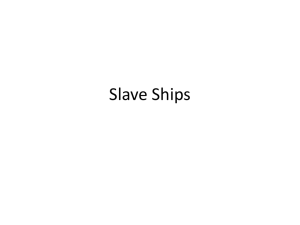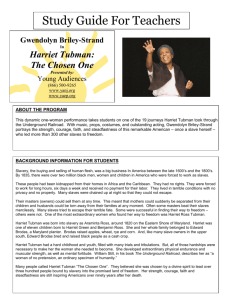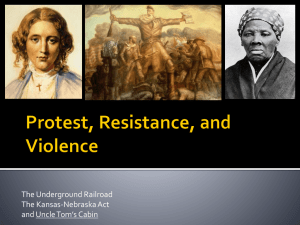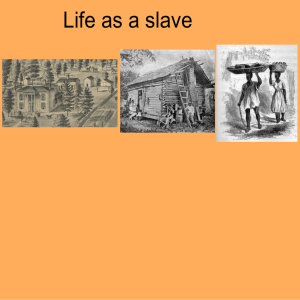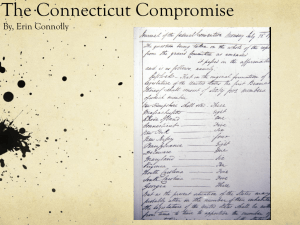Harriet Tubman: Guide to Freedom - Adame
advertisement
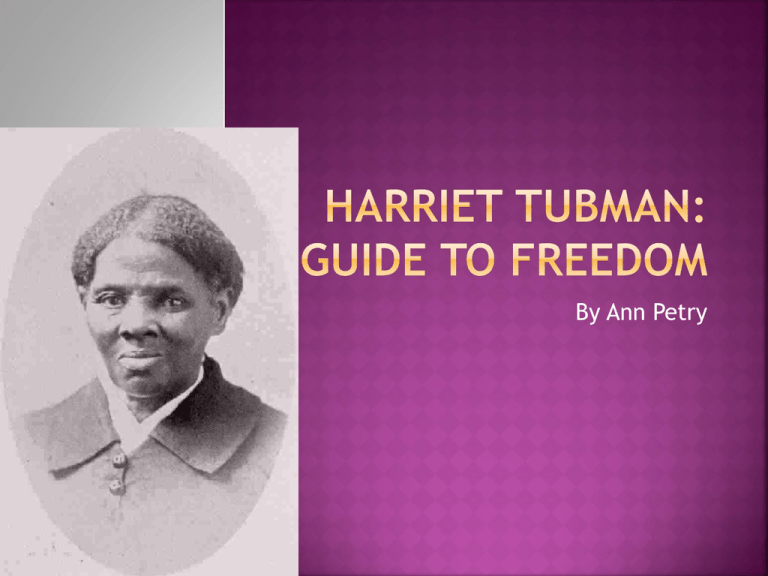
By Ann Petry fugitives: people fleeing from the law There was a warning on the news about a fugitive on the loose in our city. incentive: something that stimulates one to action; encouragement As an incentive to improve grades, the teacher gave the students candy when they turned in their work on time. disheveled: untidy; messy After seeing his disheveled backpack, the teacher understood why the student could not find his homework. guttural: made in back of the throat Last week when Ms. Adame was sick, her voice was very guttural. mutinous: rebelious The students became mutinous after they were told summer vacation was canceled. cajoling: coaxing or persuading gently The lady cajoled the cat out of the tree by offering it food. indomitable: not easily discouraged Although she failed the test, the student remained indomitable. fastidious: refined in an oversensitive way, so as to be easily disgusted or displeased To survive in the wilderness, one cannot be fastidious. Listen to the following song. As you listen, take notes on what/who you think the song is about Be prepared to share your ideas with the class Was not underground and railroads were not used help escaped slaves make their way from the slave-owning southern states up through the northern states and eventually into Canada. Once a slave escaped and managed to make contact with sympathizers, he or she became a part of the underground railroad The act of transporting the escaped slaves incorporated all the terms used during a railroad journey: The routes from safe-house to safe-house (houses where fugitive slaves were kept) were called 'lines'. Stopping places were called 'stations'. Those who aided fugitive slaves were known as 'conductors'. the fugitive slaves were known as 'packages' or 'freight.' At the 'stations,' the slaves were given food, rest, and a change of clothing. Known as “Moses” A former slave who ran away from a plantation in 1849 but returned to rescue others. Escorted African American slaves on the Underground Railroad to Canada She never lost a passenger Religious songs created by African American slaves before the Civil War. Many songs are said to contain hidden messages about the best way to escape from slavery Harriet Tubman used Go Down, Moses to notify slaves that she had returned to help free them is an American Negro Spiritual . It describes events in the Old Testament of the Bible specifically Exodus 7:26: "And the Lord spoke unto Moses, go unto Pharaoh, and say unto him, thus saith the Lord, Let my people go, that they may serve me," in which God commands Moses to demand the release of the Israelites from bondage in Egypt. In the song, "Israel" represents the AfricanAmerican slaves while "Egypt" and "Pharaoh" represent the slave master. In this excerpt from a longer biography, you will follow Harriet Tubman from the autumn of 1851 through the spring of 1852 as she leads eleven frightened, weary slaves on the dangerous journey from Maryland to freedom in Canada on the Underground Railroad. Tubman defies the Fugitive Slave Laws to “conduct” her group because she believes that those laws are immoral, and she does all she can to help slaves escape safely. •As you read the story, gather as much information about Harriet Tubman as possible. As you read, fill in the chart with the information you learn from the narrator. Questions Harriet Tubman Who was Harriet Tubman? •An escaped slave What did she do? •` When did she live? •19850’s??? Where did she work and •??? live? Why is she important? How did she help slaves escape? •Freed slaves •Guided the slaves to stations


